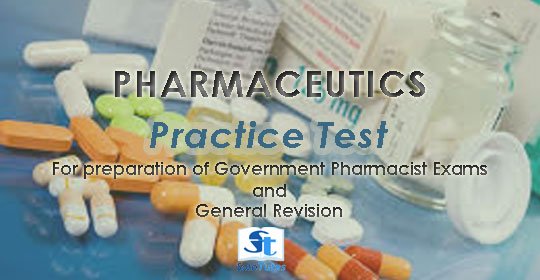
Pharmaceutics
Pharmaceutics is a branch of pharmacy which deals with the process of turning a new chemical entity (NCE) or old drugs into a medication to be used safely and effectively by patients. It is also called the science of dosage form design.
Explore in Pharmaceutics
Chapters All ❱
![]() pharmacy exams
pharmacy exams
11 May 2021
Definition of Tablets (oral unit dosage form), types of Tablets, advantages and disadvantages of Tablets, compression of Tablets, manufacturing , ma...
![]() pharmacy exams
pharmacy exams
13 May 2021
Packaging is the one of the factor to which stability of drug is depends during its storage.So a proper packaging required for pharmaceuticals. This...
Notes All ❱
![]() diksha bhatla
diksha bhatla
8 Dec 2022
Solubilization, introduced by Mc Bain in 1937, involves dissolving poorly soluble solutes in water using surfactants, forming thermodynamically st...
![]() diksha bhatla
diksha bhatla
4 Nov 2022
The amorphous solid state possesses several advantages in comparison to the crystalline state which allow enhanced forms of drugs to be produced.&nb...
![]() solotutes
solotutes
9 Jan 2022
The prescriptions are generally written in English language but Latin words and abbreviations are frequently used in order to save time. So it becomes...
![]() prakash joshi
prakash joshi
11 May 2021
Advantages and disadvantages of tablet in manufacturing, Dosage calculation, unit Dosage form, cost, packaging of Tablets, transportation and dispensi...
![]() pharmacy exams
pharmacy exams
11 May 2021
Tablets are classified according to their route of administration or function. Tablets are Classified as oral ingested Tablets, Tablets for oral cavit...
![]() prakash joshi
prakash joshi
14 May 2021
Pharmaceutical containers are divided according to their utility i.e. well closed container for solid items for transportation, tightly closed conta...
![]() prakash joshi
prakash joshi
13 Jun 2021
Prodrugs are generally the esters or amides of parent drug, and are useful in improving the solubility, stability, bioavailability of drugs, masking...
One Liners All ❱
moistening agents
2 of 15 〉 Dosage form comprising several elements (e.g., microspheres or coated pellets) dif- fering in the rate of drug release.multi compartment formulation
13 more 👇
prodrug
2 of 15 〉 Process that differentiates or separates solid particles according to their size using a meshed or perfo- rated device.sieving
13 more 👇
implantation
2 of 15 〉 Specific case of drug embedding in insoluble excipients (typically in a polymer) in order to achieve extended release.matrix formulation
13 more 👇
elutriation
2 of 15 〉 Technological process, which consists of mixing or inclusion of the therapeutic substance with an excipient or their mixtures,embedding
13 more 👇
diffusion barrier
2 of 15 〉 Name a stage in the drying of solids, above which the drying rate is linear, at which the drying rate ceases to be linear, until it reaches the equilibrium moisture content.critical moisture content
13 more 👇
capsule
2 of 15 〉 Transfer of a drug across a membrane by a transporter (often a protein) constituent of the cytosol membrane.carrier-mediated drug transport
13 more 👇
agglomeration
2 of 15 〉 Accumulation or collection of particles into larger units.aggregation
13 more 👇
douche
2 of 14 〉 Viscous liquid preparations used for mouth and throat infectionsThroat paints
12 more 👇
Tuberculosis
2 of 15 〉 The Schick test is done to detect the immunity or susceptibility to _______.Diphtheria
13 more 👇
.png)


